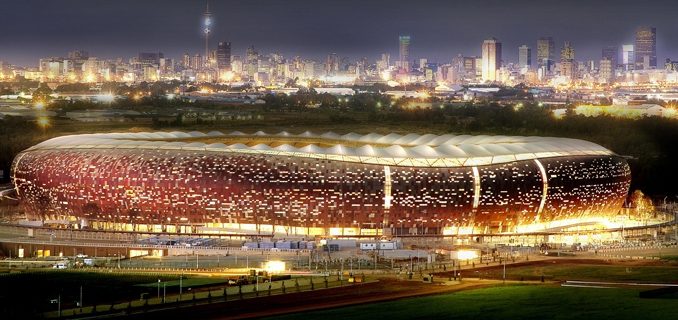
There are numerous stunning football stadiums around the world, each with its unique features and architectural designs. While opinions on beauty can vary, here are five stadiums known for their aesthetics and visual appeal:Top 5 beautiful football stadiums
- Allianz Arena (Munich, Germany): The Allianz Arena is an iconic football stadium known for its distinctive exterior. It features a translucent outer shell that can change colors, illuminating the stadium in vibrant hues. The changing lights create a mesmerizing spectacle, especially during night matches.
- Santiago Bernabéu Stadium (Madrid, Spain): Home to Real Madrid, the Santiago Bernabéu Stadium is an architectural masterpiece. With a seating capacity of over 81,000 spectators, it boasts a modern and sleek design. The stadium’s giant LED screens and the iconic metal façade give it a grand and elegant appearance.
- Maracanã Stadium (Rio de Janeiro, Brazil): The Maracanã Stadium holds a special place in football history. It has hosted numerous memorable matches, including World Cup finals and Olympic events. With its circular shape, massive seating capacity, and vibrant atmosphere, it exudes a sense of grandeur and remains an iconic symbol of Brazilian football.
- Wembley Stadium (London, England): Wembley Stadium is one of the most famous football stadiums globally, known for its rich history and stunning architecture. The stadium features a distinctive arch that stretches over the arena, creating an impressive and recognizable silhouette. With its vast seating capacity and state-of-the-art facilities, Wembley is a sight to behold.
- Estadio Azteca (Mexico City, Mexico): As the largest stadium in Mexico and one of the most significant stadiums in the world, Estadio Azteca is an impressive venue. It has hosted multiple World Cup finals and is known for its electric atmosphere.
Allianz Arena (Munich, Germany)

- Exterior Design: The most distinctive aspect of the Allianz Arena is its exterior facade. It is constructe using inflat ETFE (ethylene tetrafluoroethylene) plastic panels that cover the entire outer shell of the stadium. The translucent panels can change colors and a illuminate during matches, creating a spectacular visual display. The stadium can glow in various shades, including red, blue, and white, representing the home colors of both FC Bayern Munich and TSV 1860 Munich.
- Unique Shape: The Allianz Arena has a circular shape with a symmetrical design. Its roof consists of a series of overlapping panels that create a flowing, dynamic appearance. The circular design allows for optimal viewing angles and creates an intimate atmosphere for spectators.
- Capacity: The stadium has a seating capacity of approximately 75,000 spectators for international matches and can accommodate up to 70,000 for domestic matches. The seating arrangement is divided into three tiers, ensuring a good view of the pitch from every seat.
- Modern Facilities: The Allianz Arena offers state-of-the-art facilities for players, fans, and media. It includes modern dressing rooms, hospitality areas, press facilities, and a wide range of amenities to enhance the overall matchday experience.
- Location: Situated in the Fröttmaning district of Munich, the Allianz Arena is easily accessible and well-connected to public transportation. Its location outside the city center provides ample space for parking and other infrastructure.
Santiago Bernabéu Stadium (Madrid, Spain)
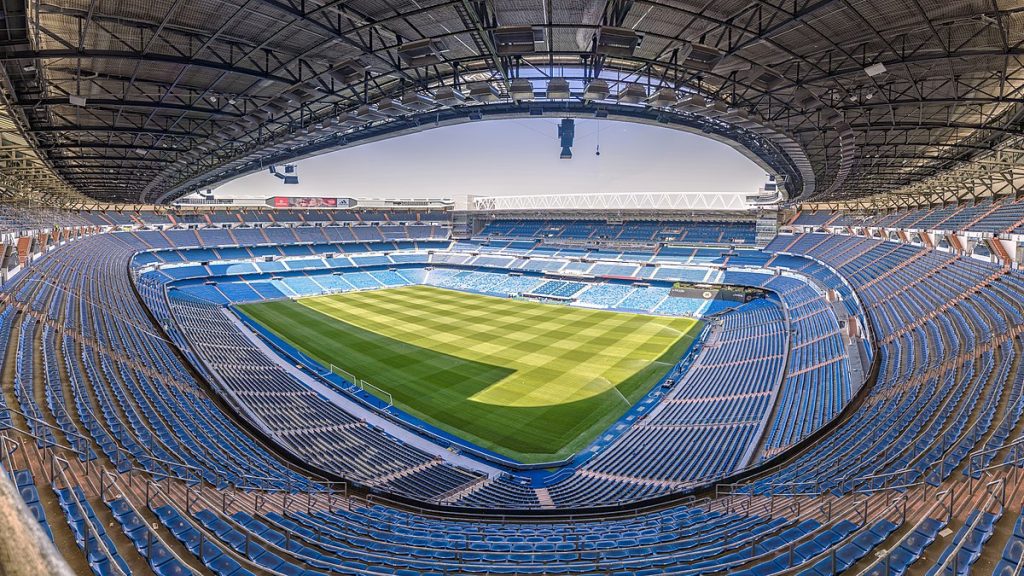
- Architectural Design: The stadium’s architecture is a testament to modernity and grandeur. With its sleek lines, towering stands, and imposing presence, the Santiago Bernabéu Stadium showcases an elegant and impressive design. The stadium underwent renovations in recent years to enhance its facilities and visual appeal.
- Roof and LED Screens: The stadium features a retractable roof the close during adverse weather conditions, ensuring uninterrupted matches. In addition, enormous LED screens are integrated into the stadium’s façade, providing spectators with real-time match updates, replays, and dynamic visuals.
- Trophy Room: One of the unique aspects of the Santiago Bernabéu Stadium is its Trophy Room. It showcases the rich history and achievements of Real Madrid, displaying numerous trophies and memorabilia. The Trophy Room offers fans an opportunity to immerse themselves in the club’s legendary past.
- Capacity and Seating: The stadium has a seating capacity of around 81,000 spectators, making it one of the largest stadiums in Europe. The seating arrangement ensures excellent visibility from every seat, enabling fans to have an optimal view of the action on the pitch.
- Location: Situated in the heart of Madrid, the Santiago Bernabéu Stadium enjoys a prime location. It is easily accessible through public transportation and surrounded by a vibrant atmosphere, with nearby restaurants, bars, and shops contributing to the overall matchday experience.
Maracanã Stadium (Rio de Janeiro, Brazil):
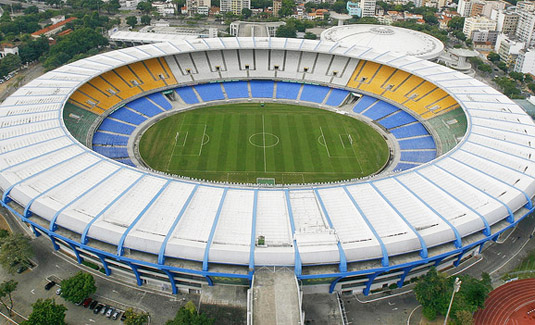
The Maracanã Stadium, located in Rio de Janeiro, Brazil, is an iconic and historic football stadium renowned for its rich heritage and stunning architecture. Here are some notable features of the Maracanã Stadium:
- Historical Significance: The Maracanã Stadium holds a special place in football history. It hosted the final match of the 1950 FIFA World Cup, often referred to as the Maracanazo, where Uruguay defeated Brazil in a shocking upset. This match is still consider one of the most memorable moments in football history.
- Imposing Structure: The stadium boasts a massive and impressive structure. Its circular shape, towering stands, and the vastness of the seating areas create a sense of grandeur. The stadium underwent renovations for the 2014 FIFA World Cup and the 2016 Summer Olympics, ensuring it maintains its visual appeal and modern amenities.
- Scenic Location: The Maracanã Stadium is located in a picturesque setting, surrounded by lush green hills and the Tijuca Forest. The stadium offers stunning views of the iconic Christ the Redeemer statue and the cityscape of Rio de Janeiro, adding to its aesthetic appeal.
- Capacity and Atmosphere: With a seating capacity of over 78,000 spectators, the Maracanã Stadium provides an electric atmosphere during matches. The passionate Brazilian football fans, known as “cariocas,” create an energetic and vibrant ambiance that enhances the overall experience.
- Iconic Events: In addition to hosting the 1950 World Cup final, the Maracanã Stadium has been the venue for other major international competitions, including the 2014 FIFA World Cup and the 2016 Summer Olympics. It has also witnessed numerous iconic performances by legendary players throughout the years.
Wembley Stadium (London, England):
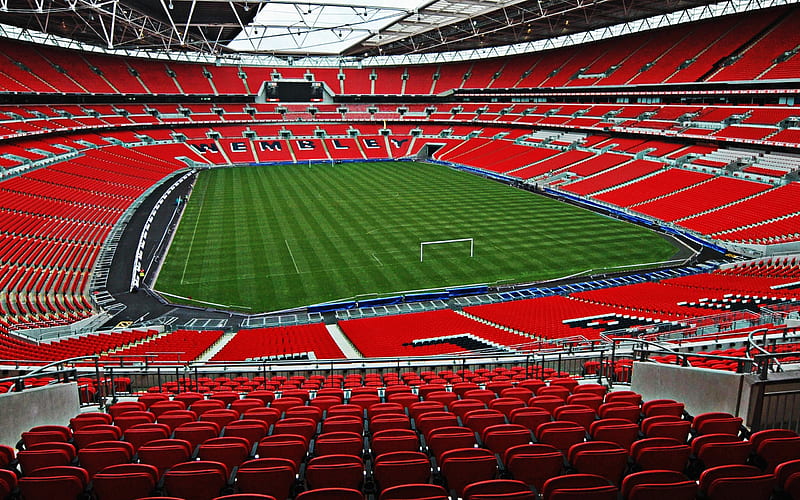
Wembley Stadium, situated in London, England, is an iconic and visually stunning football stadium. Here are some features that make Wembley Stadium a remarkable venue:
- Arch Design: The most striking feature of Wembley Stadium is its iconic arch. The 134-meter-high arch spans over the stadium, creating a distinctive and recognizable silhouette on the London skyline. The arch serves as a symbolic representation of the stadium and provides structural support for the roof, allowing for an unobstructed view for spectators.
- Capacity: Wembley Stadium is the largest stadium in the United Kingdom, with a seating capacity of around 90,000 spectators. Its vast seating arrangement provides ample space for fans to enjoy matches and creates an incredible atmosphere during events.
- Stadium Bowl: The stadium’s seating is design in a bowl shape, ensuring that spectators are close to the action on the pitch. This design provides excellent sightlines from every seat, giving fans an immersive experience during matches.
- Arch Lighting: The arch is equipped with an advanced lighting system that can project various colors and patterns. This feature allows for dynamic lighting displays during special events or to commemorate important occasions, adding to the stadium’s visual appeal.
- History and Events: Wembley Stadium has a storied history and has hosted numerous prestigious football matches and events. It has been the venue for FA Cup finals, England national team matches, and UEFA Champions League finals. The stadium has also welcomed renowned music concerts, making it a versatile and iconic entertainment venue.
Estadio Azteca (Mexico City, Mexico):
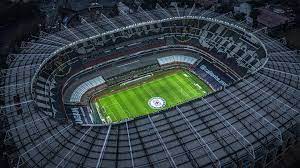
- Historical Significance: Estadio Azteca has a rich footballing history and has hosted several significant events. It is the only stadium in the world to have hosted two FIFA World Cup finals: the 1970 and 1986 editions.
- Capacity: The stadium has a seating capacity of around 87,000 spectators, making it one of the largest stadiums in the world. The vast seating arrangement creates a vibrant atmosphere during matches, with passionate Mexican fans filling the stands.
- Unique Design: Estadio Azteca features an elliptical shape, which allows for excellent sightlines from every seat. The stadium’s design ensures that spectators have an unobstructed view of the pitch, enhancing the matchday experience.
- Altitude: Mexico City is situated at a high altitude, approximately 2,240 meters (7,350 feet) above sea level. Estadio Azteca’s elevation contributes to a unique factor in football matches played there, as the thinner air can impact the ball’s flight and players’ physical performance.
- Cultural Icon: Estadio Azteca is not only a football stadium but also a cultural icon in Mexico. Its significance goes beyond the sport, as it has hosted concerts, cultural events, and even Papal Masses. The stadium is deeply ingrained in the national identity and holds a special place in the hearts of Mexican sports enthusiasts.
